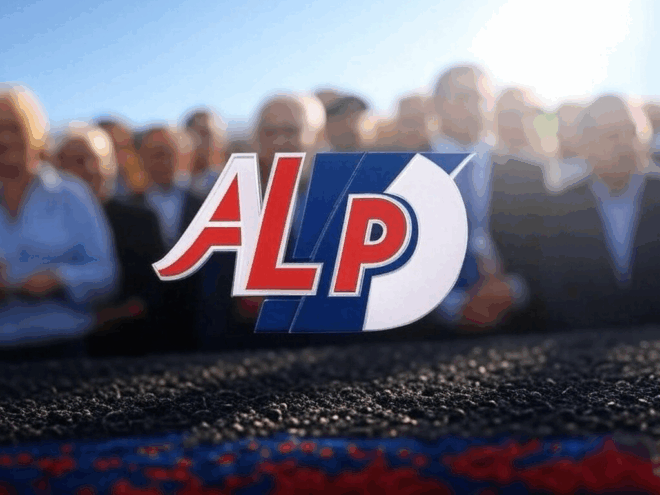
Australia’s political landscape has long been characterised by a duopoly, primarily dominated by the Australian Labor Party (ALP) and the Liberal-National Coalition (LNP). However, this once clear distinction has increasingly blurred, leading to what can be described as a functional uniparty. This uniparty is composed of career politicians who prioritise self-interest and are beholden to powerful donors, ultimately undermining democratic representation and economic stability. In this post, we will delve into the mechanisms of this uniparty, focusing on donor influence and its detrimental effects on Australia’s democracy and economy. We will also explore the urgent reforms needed to restore democratic integrity and economic equity.
The Emergence of the Uniparty
Convergence of Ideology and Policy
Historically, the ALP has championed working-class interests and social progressivism, while the LNP has advocated for free-market policies and conservatism. Over the decades, however, the ideological gap between these two parties has narrowed significantly. Both have embraced neoliberal policies such as deregulation, privatisation, and globalisation. For instance, the ALP’s market reforms in the 1980s under leaders like Bob Hawke and Paul Keating mirrored the LNP’s policies under John Howard, including the introduction of the Goods and Services Tax (GST) and workplace deregulation.
Recent elections, particularly in 2019 and 2022, have illustrated this convergence, with both parties adopting similar stances on critical issues such as tax cuts, housing affordability, and climate policy. The 2019 Stage 3 tax cuts, supported by both parties, exemplify this trend, with only minor adjustments made by Labor in 2024. This convergence creates a uniparty dynamic where policy outcomes become predictable, regardless of which party is in power, ultimately eroding voter choice.
Rise of Career Politicians
The professionalisation of politics has given rise to a class of career politicians who view their roles as lifelong vocations. A study conducted by the Australian National University in 2020 revealed that over 60% of federal parliamentarians had prior roles as political staffers, union officials, or party operatives, a stark contrast to only 20% in the 1970s. Many of these politicians enter parliament in their 30s, often lacking diverse real-world experience. This has fostered a culture of loyalty to party hierarchies over constituents, with rigid party discipline ensuring that MPs rarely cross the floor – only 0.2% of votes since 2000 involved defections. This shared careerist culture unites ALP and LNP politicians, prioritising re-election and personal gain over principled governance, further cementing the uniparty’s structure.
Donor Influence as a Unifying Force
Political donations serve as a critical mechanism uniting the ALP and LNP into a uniparty. Australia’s lax donation laws allow corporations, unions, and wealthy individuals to exert significant influence over political agendas. In the 2022-23 financial year, the Australian Electoral Commission reported that the ALP received $68 million in donations, while the LNP received $74 million. Major donors include mining companies like BHP and Rio Tinto, banks such as Westpac, property developers, and unions like the CFMEU. Notably, donors like Clive Palmer and Anthony Pratt contribute to both parties, ensuring their influence regardless of election outcomes. This shared reliance on elite funding aligns the uniparty’s priorities with donor agendas, marginalising public interests and reinforcing policy convergence.
Mechanisms of Donor Influence
Scale and Regulatory Weaknesses
Australia’s political donation system amplifies donor influence due to minimal oversight. Unlike Canada, which caps individual contributions at CAD 1,725 annually, Australia has no upper limit on donations, with a disclosure threshold set at $16,900 for 2024. Loopholes exist that allow donors to split contributions across state branches or use associated entities to obscure their financial influence. A notable example is the 2018 donation scandal involving Crown Casino, where funds were funneled through obscure entities to both parties, bypassing scrutiny. The delayed reporting by the Australian Electoral Commission – sometimes up to 18 months – further reduces transparency, allowing donors to operate with impunity.
Access and Lobbying Channels
Donations secure access to policymakers through exclusive fundraisers, private dinners, and lobbying events. Both parties host “business observer” programs at national conferences, where corporations pay substantial fees for direct access to MPs. A 2019 investigation by ABC revealed that property developers attending LNP events successfully lobbied for zoning changes in Sydney. Lobbying firms, often staffed by former politicians, further amplify donor influence. For instance, former LNP Treasurer Joe Hockey joined Bondi Partners, representing mining clients, while former ALP Senator Stephen Conroy worked with the gambling industry. This revolving door – over 25% of federal MPs since 2000 have taken post-political roles in donor industries – ensures that donor priorities remain embedded in policy, reinforcing the uniparty’s elite alignment.
Policy Capture and Quid Pro Quo
Donor influence often manifests as policy capture, where legislation favours contributors. A stark example is the mining industry’s successful campaign against the 2010 Resource Super Profits Tax (RSPT). The Minerals Council of Australia, backed by major players like BHP and Rio Tinto, spent $22 million on an anti-tax campaign, contributing to Kevin Rudd’s political demise. The replacement tax raised only $1.8 billion over four years, compared to the RSPT’s projected $12 billion annually. Similarly, property developers, who donated $10 million to both parties from 2018 to 2022, secured relaxed planning laws in New South Wales, fuelling overdevelopment despite public protests. The gambling industry’s influence is also evident, as both parties resisted calls for betting reforms following $5 million in donations from ClubsNSW. These examples illustrate how donors extract concessions, aligning the uniparty with elite interests.
Cultural Normalisation of Donor Influence
Donor influence has become normalised within Australia’s political culture, with both parties framing donations as legitimate stakeholder engagement. This acceptance de-sensitises politicians to ethical concerns, embedding donor priorities in decision-making. For instance, the 2016 donation of $6.7 million from Chinese-linked entities to both parties raised concerns about foreign influence, yet no reforms followed, as both the ALP and LNP defended the status quo. This cultural entrenchment ensures that donor influence persists across governments, unifying the uniparty’s behaviour.
Impact on Australia’s Democracy
Erosion of Representation
The uniparty’s donor-driven priorities significantly undermine democratic representation. According to the 2022 Australian Election Study, only 30% of voters believe politicians care about their views, a sharp decline from 50% in the 1990s. Policies that favour donors – such as corporate tax breaks or fossil fuel subsidies – alienate voters, who perceive that elites are prioritised over ordinary citizens. The rise of minor parties and independents, such as the Greens and teal independents, who collectively garnered 25% of the primary vote in 2022, reflects widespread frustration with the uniparty. However, the major parties’ financial dominance – $150 million in campaign spending for the major parties compared to $15 million for the Greens – and their control of parliamentary processes limit these alternatives, further entrenching the uniparty’s grip and stifling diverse representation.
Decline in Accountability
Donor influence also reduces accountability, as both parties often collude to protect mutual interests. Scandals such as the 2021 sports rorts, where Coalition electorates received disproportionate grants, saw muted criticism from the ALP, reflecting a tacit agreement to overlook misconduct. The 2016 Chinese donation scandal similarly prompted no bipartisan reform, with both parties resisting donation caps. The establishment of the National Anti-Corruption Commission in 2023, which has limited retrospective powers and political appointees, raises doubts about its ability to challenge donor-driven practices. This lack of accountability reinforces perceptions of a uniparty insulated from public scrutiny.
Voter Apathy and Democratic Decay
The pervasive influence of donors fuels voter apathy, posing a significant threat to democratic health. While compulsory voting ensures a federal turnout of around 90%, voluntary local elections see participation drop below 50% in some areas. The 2024 Edelman Trust Barometer reported that only 43% of Australians trust the government, down from 61% in 2014, with donor scandals cited as a key driver of this decline. This disillusionment risks democratic decay, as citizens disengage from a system perceived as beholden to elites. While populist movements are gaining traction, they struggle against the uniparty’s structural advantages, perpetuating a cycle of apathy and entrenchment.
Case Study: Foreign Donations and National Security
Foreign donations further highlight the democratic risks associated with donor influence. In 2017, ASIO warned that Chinese-linked donations to both parties posed national security risks. However, no ban was implemented until 2018, and enforcement remains weak. The uniparty’s reluctance to act, driven by financial dependence, compromises national sovereignty and public trust, illustrating how donor influence extends beyond domestic policy to threaten democratic integrity.
Impact on Australia’s Economy
Policy Short-Termism
The uniparty’s donor-driven policies prioritise short-term gains over long-term stability. Both parties rely heavily on housing market growth, fueled by donor-influenced tax incentives such as negative gearing and capital gains tax discounts. This has led to a staggering 150% increase in median house prices since 2000, far outpacing wage growth of only 40%. Consequently, high household debt – currently at 185% of GDP – locks younger generations out of homeownership. Critical investments in education, infrastructure, and innovation are sidelined, as they lack the immediate political payoff demanded by career politicians and donors.
Donor-Driven Economic Distortions
Donor influence distorts economic priorities, favouring specific industries at the expense of broader economic health. The fossil fuel sector, which donated $8 million to both parties from 2018 to 2022, continues to receive $11 billion in annual subsidies, delaying necessary transitions to renewable energy despite pressing climate risks such as bushfires and droughts. Corporate tax cuts implemented in 2017-18, costing taxpayers $30 billion over a decade, disproportionately benefited multinationals, with 33% of large corporations paying no tax in 2022. These policies exacerbate inequality, as evidenced by the Gini coefficient rising from 0.30 in the 1990s to 0.34 in 2023, while real wages stagnate – falling by 2.1% from 2020 to 2023.
Neglect of Structural Challenges
The appeasement of donors stifles necessary reforms to address structural economic challenges. Productivity growth has slowed to an annual rate of 1.1% since 2010, down from 2.2% in the 1990s. An aging population is projected to increase the dependency ratio to 57% by 2050, placing additional strain on pension and healthcare systems. Yet, both parties avoid bold tax or superannuation reforms, fearing backlash from donor-aligned sectors such as finance and property. This short-termism, driven by donor influence, poses risks of fiscal imbalances and economic instability.
Case Study: Housing Affordability Crisis
The housing affordability crisis serves as a poignant example of the economic harm caused by donor-driven policies. Donations from property developers have secured policies like negative gearing, which benefits investors but inflates housing prices. In Sydney, median house prices soared to $1.6 million in 2024, requiring 12 years of average income to afford, compared to just 6 years in 2000. This situation entrenches inequality, with 40% of 25-34-year-olds renting indefinitely, and raises the specter of a housing bubble collapse, threatening broader economic stability.
Counterarguments and Rebuttals
Ideological Differences Persist
Some may argue that the ALP and LNP remain distinct, citing differences in workplace relations or social policy. However, the core economic and donor-driven policies converge significantly, with both parties prioritising tax cuts and fossil fuel subsidies. The uniparty dynamic is defined more by shared elite alignment than by ideological differences.
Donations as Democratic Participation
Defenders of the current system may claim that donations represent legitimate democratic participation. Yet, the scale of donations – often millions from single entities – disproportionately amplifies elite voices. Ordinary citizens cannot match the influence of a $1 million donation, undermining the principle of equal representation.
Economic Resilience
Proponents may highlight Australia’s 30-year streak of recession-free growth until the COVID-19 pandemic as evidence of economic resilience. However, this narrative masks underlying vulnerabilities such as housing bubbles, high debt levels, and donor-driven subsidies that exacerbate inequality and risk long-term instability, which the uniparty neglects.
Solutions to Mitigate the Uniparty and Donor Influence
1. Campaign Finance Reform: Implement caps on donations at $5,000 annually, mandate real-time disclosures for contributions above $1,000, and increase public funding to reduce reliance on donor money, following models from countries like Norway.
2. Strengthening Accountability: Empower the National Anti-Corruption Commission to conduct retrospective investigations and public hearings to deter donor-driven misconduct.
3. Diversifying Representation: Introduce term limits (e.g., 12 years) and incentives for non-career politicians to disrupt the uniparty’s homogeneity.
4. Lobbying Reforms: Mandate public disclosure of lobbying meetings and impose a five-year ban on former MPs from taking lobbying roles to curb the revolving door.
5. Economic Policy Reform: Prioritize investments in renewable energy, education, and productivity-enhancing reforms to address structural challenges and reduce reliance on donor sectors like property and fossil fuels.
6. Civic Engagement: Enhance civic education and participatory mechanisms, such as citizens’ assemblies, to rebuild trust and counter voter apathy.
7. International Learning: Adopt real-time donation disclosure systems similar to New Zealand’s and public funding models like Germany’s to limit donor influence and promote transparency.
Conclusion
Australia’s political duopoly has transformed into a uniparty of career politicians driven by self-interest and donor influence, eroding both democracy and economic stability. Donor contributions, facilitated by lax regulations, lobbying, and a revolving door between politics and industry, align the ALP and LNP with elite agendas, undermining representation, accountability, and public trust. Economically, donor-driven policies exacerbate inequality, fuel housing unaffordability, and promote short-termism, neglecting structural challenges that threaten the nation’s future.
Without urgent reforms to campaign finance, accountability, and representation, the uniparty risks further entrenching a system that priorities donors over the public good, jeopardising Australia’s democratic and economic future. Bold action is essential to restore a democracy and economy that serve all Australians, not just the powerful.
Let’s engage in this crucial conversation and advocate for the changes necessary to ensure a fair and equitable political landscape for all. Your voice matters – join the discussion today!



